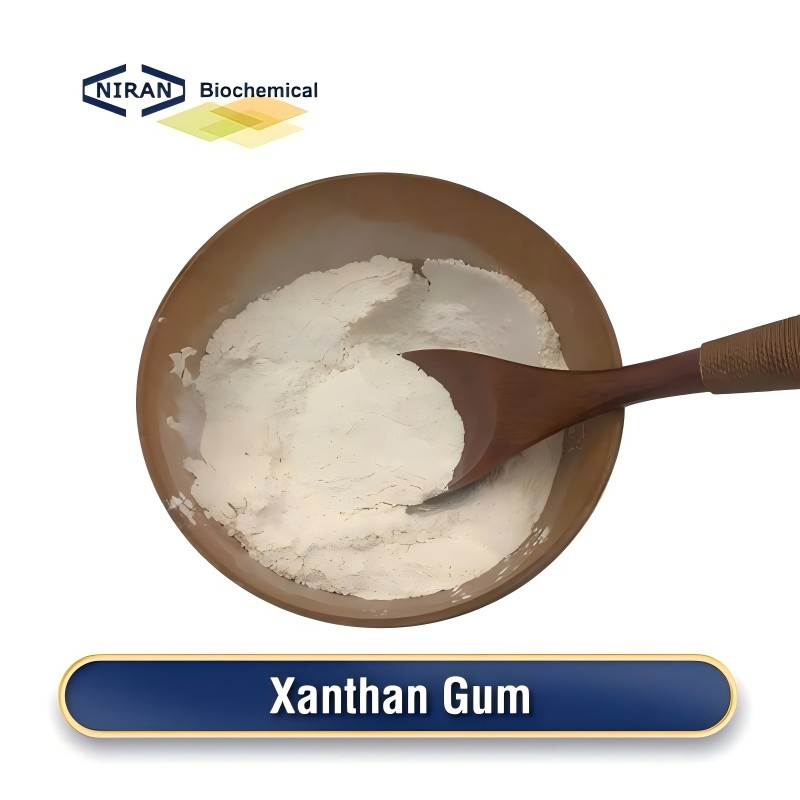In recent years, xanthan gum has gained widespread popularity in the culinary world, particularly among health-conscious consumers and those adhering to gluten-free diets.
This unique ingredient, derived from the fermentation of sugars by the bacterium Xanthomonas campestris, is not only a thickening agent but also serves multiple functions in cooking, such as stabilizing emulsions and improving texture. As more people recognize its versatility, xanthan gum is becoming a staple in kitchens around the globe.
What is gum xanthan?
A polysaccharide made of connected sugar molecules is xanthan gum. Since its discovery in the 1960s, it has grown to be a crucial component of many food products. Xanthan gum is commonly used in sauces, salad dressings, baked goods, and dairy alternatives, providing the necessary thickness and stability that many recipes require.

Nutritional Overview
The nutritional profile of xanthan gum is one of its most notable qualities. It’s a calorie-free choice, so it appeals to people who are limiting their intake. It can also help with digestion because it is categorized as a soluble fiber. Consuming soluble fibers can enhance gut health and encourage regularity, according to studies.
The Culinary Benefits of Xanthan Gum
1. Effective Thickening Agent
Xanthan gum is well known for its effective thickening properties. One cup of liquid can be thickened with just 1/4 teaspoon of xanthan gum, according to research. This is significantly more efficient than other common thickeners.
For example, cornstarch typically requires about 2 tablespoons to achieve a similar thickness. This potency makes xanthan gum a time-saving option in the kitchen, allowing cooks to achieve desired textures without adding extra ingredients.
2. Stabilization of Emulsions
In emulsified products like salad dressings and sauces, xanthan gum helps maintain a uniform consistency by preventing the separation of oil and water.
According to a study published in the Journal of Food Science, salad dressings that included xanthan gum exhibited a 30% longer shelf life compared to those without it. Commercial food manufacturers who need to maintain product quality over time will especially benefit from this longer shelf life.
3. Enhancing Texture in Gluten-Free Baking
For those who are gluten-sensitive or celiac, xanthan gum is a game-changer in baking. It supplies the structure and elasticity that gluten usually does when incorporated in gluten-free recipes. It is recommended to use about 1 teaspoon of xanthan gum for every cup of flour that is gluten-free. This ingredient can significantly alter the finished product, enhancing the texture of cakes, cookies, and breads.
In a study conducted by the Journal of Agricultural and Food Chemistry, baked goods made with xanthan gum were rated 50% higher in texture satisfaction than those made without it.
4. Versatility Across Culinary Applications
Xanthan gum is not limited to thickening and stabilizing; it can also enhance the overall quality of food. It is commonly used in:
- Soups and Sauces: To get a smooth consistency without including additional fats.
- Ice Cream and Dairy Alternatives: To prevent ice crystal formation, maintaining a smooth texture.
- Smoothies and Shakes: To create a thicker, more luxurious mouthfeel.
- Gluten-free products: An essential component in baking items that helps them reach the right consistency.
How to Use Xanthan Gum in Cooking
1. Measuring the Right Amount
When using xanthan gum, precision is key. The typical guideline is to use about 1/4 teaspoon per 1 cup of liquid for thickening. For sauces or gravies, starting with 1/2 teaspoon is advisable, adjusting as needed based on desired thickness.Use about 1 teaspoon of gluten-free flour per cup while baking.
2. Mixing Techniques
To avoid clumping, it’s crucial to mix xanthan gum properly. Adding it directly to liquids can lead to lumps, so it’s best to blend it with dry ingredients or create a slurry by mixing it with a small amount of oil or liquid before adding it to your dish. This technique ensures an even distribution throughout your mixture.
3. Temperature Considerations
Xanthan gum is adaptable for a range of uses because it can be added to hot or cold liquids. For cold dishes like salad dressings, simply whisk in the xanthan gum until it dissolves. In hot preparations, adding xanthan gum toward the end of cooking will allow it to thicken without the risk of overcooking.
Health Considerations
The Food and Drug Administration (FDA) has classified xanthan gum as generally recognized as safe (GRAS), yet some people may have stomach pain, particularly if they take excessive amounts of it. It’s best to start out slowly and see how your body responds.
In moderation, xanthan gum can be a beneficial addition to a balanced diet, particularly for those seeking to reduce calories without sacrificing texture and flavor.
Conclusion
A strong and adaptable ingredient, xanthan gum can improve your baking and cooking efforts. Its effectiveness as a thickening agent, stabilizer, and enhancer of texture makes it a valuable asset in any kitchen.
Whether you’re preparing gluten-free recipes or looking to improve the consistency of sauces and dressings, xanthan gum can help you achieve your culinary goals. As more cooks and consumers become aware of its benefits, xanthan gum is likely to remain a staple ingredient for years to come.
